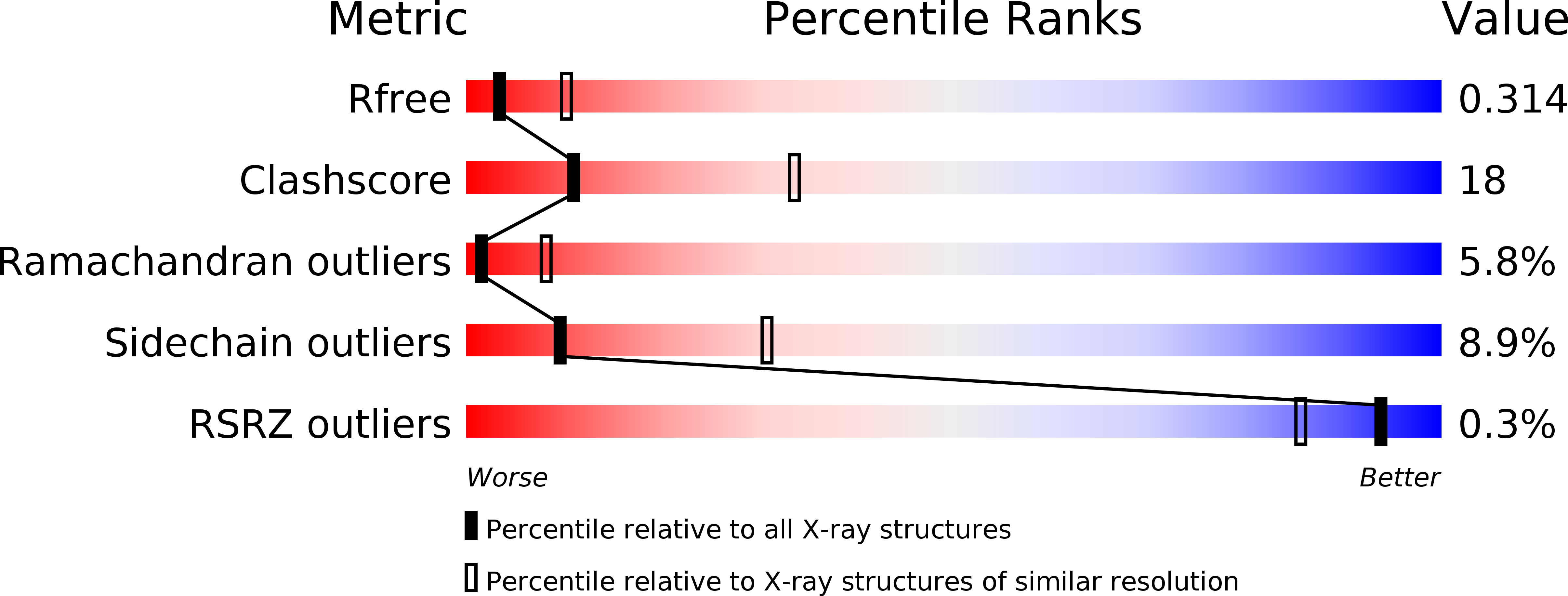
Deposition Date
2015-04-30
Release Date
2015-12-23
Last Version Date
2024-10-23
Entry Detail
PDB ID:
4ZKT
Keywords:
Title:
Crystal structure of the progenitor M complex of Clostridium botulinum type E neurotoxin
Biological Source:
Source Organism:
Method Details:
Experimental Method:
Resolution:
3.05 Å
R-Value Free:
0.32
R-Value Work:
0.24
R-Value Observed:
0.24
Space Group:
P 31


